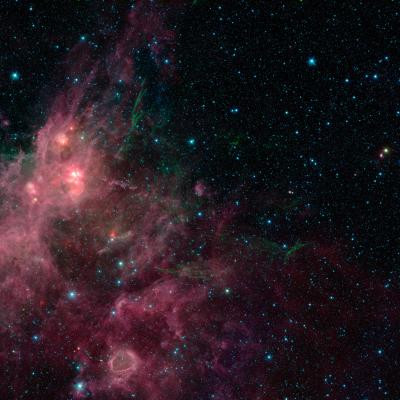Nasa: 360 Degree Panoramic Portrait of Milky Way Redefines Galaxy

A dramatic new portrait captured by Nasa's Spitzer Space Telescope has helped define the Milky Way's shape and contents.
The new composite picture was created using infrared images gathered over the last decade and provides an unprecedented insight into the plane of our galaxy. The interactive 360 degree image can be seen here.
Scientists from the University of Wisconsin-Madison used over two million images collected by the orbiting telescope, which cut through the interstellar dust that obscures the view in visible light.
Edward Churchwell, professor of astronomy at the university whose group compiled the new picture, said: "For the first time, we can actually measure the large-scale structure of the galaxy using stars rather than gas. We've established beyond the shadow of a doubt that our galaxy has a large bar structure that extends halfway out into the sun's orbit. We know more about where the Milky Way's spiral arms are."
Robert Hurt, an imaging specialist at NASA's Spitzer Space Science Center, told Science20: "We'd show it here, except you would actually need a billboard as big as the Rose Bowl Stadium to view it. Instead, we've created a digital viewer that anyone, even astronomers, can use."
The Spitzer Space Telescope was launched in 2003 and expected to last for two and a half years. The telescope remains in heliocentric orbit, gathering astrophysical data. It is the fourth and final of Nasa's Great Observatories programme.
The telescope and the images also made it possible to catalogue over 200 million new objects to the Milky Way, as well as providing new information about the galaxy's structure.
Churchwell added: "This gives us some idea about the general distribution of stars in our galaxy, and stars, of course, make up a major component of the baryonic mass of the Milky Way. That's where the ballgame is."
His group has been collecting and analysing Spitzer data for over ten years, in a project known as GLIMPSE (Galactic Legacy Infrared Midplane Survey Extraordinaire). The picture, which is known as GLIMPSE20, is interactive. Users are able to zoom in and out of the image, to look at the plane of the galaxy, as well as nebulae, bubbles, jets, bow shocks and the centre of the galaxy.
The survey conducted by the researchers has also helped astronomers understand the distribution of the Milky Way's stellar nurseries, regions where massive stars and proto-stars are created.
Robert Benjamin, a member of the GLIMPSE team, commented: "We can see every star-forming region in the plane of the galaxy."
According to Churchwell, the Spitzer is also inventing new cosmological puzzles for scientists. For example, the infrared data gathered by the GLIMPSE team has revealed that interstellar space is filled with diffuse polycyclic aromatic hydrocarbon gas.
Churchwell explained: "These are hydrocarbons — very complicated, very heavy molecules with fifty or more carbon atoms. They are brightest around regions of star formation but detectable throughout the disk of the Milky Way. They're floating out in the middle of interstellar space where they have no business being. It raises the question of how they were formed. It also tells us carbon may be more abundant than we thought."
© Copyright IBTimes 2025. All rights reserved.






















